
L'idée impériale japonaise chez Karl Haushofer
Outre la géopolitique, la plus grande passion intellectuelle du professeur et général bavarois était l’Empire du Soleil Levant
par Riccardo Rosati
Ex: https://www.barbadillo.it
 La maison d'édition de Parme, méritante et courageuse, All’Insegna del Veltro, dirigée par l'excellent traditionaliste Claudio Mutti, a publié, il y a déjà quelques années, plusieurs textes fondamentaux du savant et yamatologue (= japonologue) allemand Karl Haushofer (1869-1946), fondateur en 1924 de la prestigieuse Zeitschrift für Geopolitik ("Revue de géopolitique") et auteur de nombreux ouvrages liés à la géopolitique. Il était un défenseur tenace de la nécessité d’unir la masse continentale eurasienne. Dénoncé comme un idéologue du soi-disant expansionnisme d'Hitler, Haushofer était au contraire authentiquement anti-impérialiste. D'ailleurs, son plus grand connaisseur dans notre mouvance, le Belge Robert Steuckers, est profondément convaincu que la Géopolitique de Haushofer était précisément "non hégémonique", en opposition aux intrigues des puissances thalassocratiques anglo-saxonnes voulant une domination totale sur le monde, puisque ces dernières empêchaient le développement harmonieux des peuples qu'elles soumettaient et divisaient inutilement les continents.
La maison d'édition de Parme, méritante et courageuse, All’Insegna del Veltro, dirigée par l'excellent traditionaliste Claudio Mutti, a publié, il y a déjà quelques années, plusieurs textes fondamentaux du savant et yamatologue (= japonologue) allemand Karl Haushofer (1869-1946), fondateur en 1924 de la prestigieuse Zeitschrift für Geopolitik ("Revue de géopolitique") et auteur de nombreux ouvrages liés à la géopolitique. Il était un défenseur tenace de la nécessité d’unir la masse continentale eurasienne. Dénoncé comme un idéologue du soi-disant expansionnisme d'Hitler, Haushofer était au contraire authentiquement anti-impérialiste. D'ailleurs, son plus grand connaisseur dans notre mouvance, le Belge Robert Steuckers, est profondément convaincu que la Géopolitique de Haushofer était précisément "non hégémonique", en opposition aux intrigues des puissances thalassocratiques anglo-saxonnes voulant une domination totale sur le monde, puisque ces dernières empêchaient le développement harmonieux des peuples qu'elles soumettaient et divisaient inutilement les continents.
 Outre la géopolitique, la plus grande passion intellectuelle du professeur et général bavarois était le Japon, qu'il a analysé, à son époque, avant la première guerre mondiale, d'un point de vue absolument original. Pour démontrer l’excellence et l'utilité des écrits de Haushofer sur le Pays du Soleil Levant, il faut mentionner un fait : il a été impliqué par le grand orientaliste italien Giuseppe Tucci (1894 - 1984) (photo) dans les activités de l'IsMEO (Institut italien pour le Moyen-Orient et l'Extrême-Orient). En effet, il a été invité à Rome par cet institut pour donner deux conférences. Son texte, Le développement de l'idée impériale japonaise, n'est qu’un extrait de la deuxième conférence donnée par Haushofer, le 6 mars 1941, en pleine Seconde Guerre mondiale ! Le texte est à insérer, historiquement, comme le souligne l'éditeur du "Cahier", le regretté Carlo Terracciano, dans le contexte des activités culturelles promues par Tucci lui-même.Celui-ci visait à informer et à sensibiliser l'intelligentsia italienne sur les opportunités et les nécessités, ainsi que sur les problèmes, de l'unité géopolitique de l'Eurasie, afin d'orienter la politique nationale vers la promotion d'une vision culturelle géopolitiquement centrée sur les relations entre l'Europe et le continent asiatique.
Outre la géopolitique, la plus grande passion intellectuelle du professeur et général bavarois était le Japon, qu'il a analysé, à son époque, avant la première guerre mondiale, d'un point de vue absolument original. Pour démontrer l’excellence et l'utilité des écrits de Haushofer sur le Pays du Soleil Levant, il faut mentionner un fait : il a été impliqué par le grand orientaliste italien Giuseppe Tucci (1894 - 1984) (photo) dans les activités de l'IsMEO (Institut italien pour le Moyen-Orient et l'Extrême-Orient). En effet, il a été invité à Rome par cet institut pour donner deux conférences. Son texte, Le développement de l'idée impériale japonaise, n'est qu’un extrait de la deuxième conférence donnée par Haushofer, le 6 mars 1941, en pleine Seconde Guerre mondiale ! Le texte est à insérer, historiquement, comme le souligne l'éditeur du "Cahier", le regretté Carlo Terracciano, dans le contexte des activités culturelles promues par Tucci lui-même.Celui-ci visait à informer et à sensibiliser l'intelligentsia italienne sur les opportunités et les nécessités, ainsi que sur les problèmes, de l'unité géopolitique de l'Eurasie, afin d'orienter la politique nationale vers la promotion d'une vision culturelle géopolitiquement centrée sur les relations entre l'Europe et le continent asiatique.
Les intuitions brillantes et toujours d'actualité de Tucci
Lorsque nous parlons de Giuseppe Tucci, nous devons nous rappeler que nous faisons référence à l'homme qui est considéré par de nombreux spécialistes du domaine de l’orientalisme comme le plus grand expert de l'Asie au 20ème siècle, et donc, avec le Père Matteo Ricci (1552-1610), qui fut missionnaire jésuite en Chine à la cour des Ming et le fondateur de l'orientalisme, une voix essentielle pour traiter des civilisations de ce continent complexe et archaïque. Comme par hasard, ils étaient tous deux originaires de Macerata, et nous ne pouvons pas nous empêcher de reprocher à cette ville de ne pas abriter un musée qui leur soit consacré ! Cela révèle la "cécité culturelle" contre laquelle Tucci s'est constamment battu. Son approche, cependant, n'était pas seulement académique et soutenait parfois la politique proactive du nouvel empire italien, mais elle était également encline à nourrir ces ‘’collaborations cruciales’’, comme le disait Haushofer, qui les qualifiait de pan-continentales ou de pan-impériales. Nous pensons sincèrement qu'il est limitatif de définir le professeur italien uniquement comme un tibétologue. Il doit être considéré à tous égards comme un eurasianiste, et son IsMEO a été créé afin de fonctionner comme un "agent culturel", capable de faire en sorte que notre Italie dialogue avec les peuples asiatiques de la manière la plus profitable qui soit. Pour ce faire, il a fait appel à des experts valables, parmi lesquels Haushofer. Malheureusement, c'est l'échec de cette alliance aristocratique et de cette sodalité entre orientalistes et japonologues préconisée dans les années 1930 par ces deux superbes chercheurs qui a fait tomber le monde entier sous l'emprise de la politique néocolonialiste des thalassocraties anglo-saxonnes. En fait, le Japon impérial dont parle Haushofer visait à créer une zone de coopération panasiatique qui exclurait enfin de compte les Américains et les Britanniques de toute ingérence dans le destin de l'Orient.
 L'Allemand, dans le rapport qu’il a exposé à Rome, propose un parallélisme continu entre l'histoire européenne et japonaise : "[...] les luttes sauvages entre Taira et Minamoto, semblables à la guerre des Deux Roses, [...]" (18). Il souligne ainsi ce destin commun de l'histoire européenne et japonaise. (18), destin commun auquel il croyait obstinément. Tucci a été très impressionné par le caractère non fictionnel de la spéculation de Haushofer, par le fait que le géopolitologue a reconnu la primauté de Rome et de l'Italie en général, afin de construire une alliance avec le Japon qui ne soit pas seulement politique, mais spirituelle ; par exemple, lorsqu'il compare Kitabatake Chikafusa (1293-1354) à Dante (19), puisque tous deux ont été les auteurs de grands "poèmes politiques". Cela l'amène à déclarer que la Divine Comédie a trouvé une grande résonance dans le Jinnoshiki contemporain (神皇正統記, "Jinnō shōtōki", ca. 1339) de Kitabatake, qui peut raisonnablement être considéré comme un classique de la pensée politique japonaise, où les principes de légitimité de la lignée impériale ont été établis, conformément à la tradition shintoïste. Un tel texte, dans son ancrage de la "légitimité politique" à une matrice religieuse, ne pouvait qu'attirer l'intérêt des Allemands, qui en appréciaient les valeurs, ce qui aurait pu être une inspiration pour les nations occidentales non asservies à l'Economie et à la recherche de formules éthico-politiques sur lesquelles modeler une nouvelle forme de société, tournée vers le passé, certes, mais non nostalgique.
L'Allemand, dans le rapport qu’il a exposé à Rome, propose un parallélisme continu entre l'histoire européenne et japonaise : "[...] les luttes sauvages entre Taira et Minamoto, semblables à la guerre des Deux Roses, [...]" (18). Il souligne ainsi ce destin commun de l'histoire européenne et japonaise. (18), destin commun auquel il croyait obstinément. Tucci a été très impressionné par le caractère non fictionnel de la spéculation de Haushofer, par le fait que le géopolitologue a reconnu la primauté de Rome et de l'Italie en général, afin de construire une alliance avec le Japon qui ne soit pas seulement politique, mais spirituelle ; par exemple, lorsqu'il compare Kitabatake Chikafusa (1293-1354) à Dante (19), puisque tous deux ont été les auteurs de grands "poèmes politiques". Cela l'amène à déclarer que la Divine Comédie a trouvé une grande résonance dans le Jinnoshiki contemporain (神皇正統記, "Jinnō shōtōki", ca. 1339) de Kitabatake, qui peut raisonnablement être considéré comme un classique de la pensée politique japonaise, où les principes de légitimité de la lignée impériale ont été établis, conformément à la tradition shintoïste. Un tel texte, dans son ancrage de la "légitimité politique" à une matrice religieuse, ne pouvait qu'attirer l'intérêt des Allemands, qui en appréciaient les valeurs, ce qui aurait pu être une inspiration pour les nations occidentales non asservies à l'Economie et à la recherche de formules éthico-politiques sur lesquelles modeler une nouvelle forme de société, tournée vers le passé, certes, mais non nostalgique.
Les références à l'Italie dans le rapport de Haushofer sont diverses et variées, ce qui confirme sa connaissance et son admiration pour l’Italie. Dans son analyse de la structure politique du Japon, ses pensées se tournent plusieurs fois vers la grande culture et la beauté de notre nation, et il va même jusqu'à mentionner le trésor qu'est le musée du Bargello à Florence (21), inauguré en 1865, qui conserve la plus importante collection de sculptures de la Renaissance au monde. Dans les travaux du géopolitologue, dont celui-ci, il tente de proposer un canon occidental à comparer avec celui de l'Orient, notamment en ce qui concerne le Soleil Levant, et il l'identifie avec grande sagesse à la Ville Éternelle. Sa célèbre définition de Kyoto comme "la Rome japonaise" n'est donc pas un hasard. Malgré son nationalisme marqué, qui l'a convaincu de collaborer avec le Troisième Reich de Hitler, sur les conseils de son ami et étudiant Rudolf Walter Richard Heß (1894-1987), le professeur et général n'a jamais eu de doutes sur la primauté culturelle italienne, qui, selon lui, était indispensable pour réorganiser dans une perspective traditionnelle un Occident, mutilé parce que dominé par le mercantilisme des pouvoirs "démocratiques". C'est l'une des principales raisons qui ont poussé Tucci à divulguer la pensée de Haushofer en Italie. Hier comme aujourd'hui, Haushofer suscite plus d'attention en Italie que dans sa propre patrie ; bien que, comme nous le répéterons à la fin, elle souffre d'une diffusion et d'une exégèse rares.
 Une synthèse inestimable sur la ‘’japonicitié’’
Une synthèse inestimable sur la ‘’japonicitié’’
Le texte de Haushofer se distingue par sa clarté et sa précision, et en ce sens, il représente un document "didactique" d'une importance énorme pour les spécialistes de la géopolitique. Sa contribution à la recherche et, surtout, à la yamatologie (= japonologie) est unique dans le secteur, même si, comme nous l'avons mentionné, il est apriori et factieusement qualifié d'idéologue de l'expansionnisme national-socialiste.
Il faut rappeler que le séjour de Haushofer au Japon a duré de 1908 à 1910, pendant les toutes dernières années de la période Meiji (1868-1912), avec la Restauration qui a revigoré l'Archipel, en l'ouvrant aux meilleurs esprits étrangers, les Oyatoi Gaikokujin (お雇い外国人, littéralement : "les honorables employés étrangers"), parmi lesquels trois éminents Italiens : Edoardo Chiossone, Antonio Fontanesi et Vincenzo Ragusa, qui ont jeté les bases de l'art moderne au pays du Soleil Levant. Le voyage d'étude de Haushofer au Japon s'inscrit dans ce climat culturel florissant, lui fournissant des informations de première main qui seront plus tard développées dans son importante et peut-être encore inégalée analyse de l'essence du concept impérial au Japon.
L'archipel s'est unifié selon un modèle "ethno-politique" précis. À cet égard, Haushofer ne cache pas sa conviction que l'Occident n'a jamais vraiment compris la puissance particulière du Tennō (天皇, l'Empereur) dans l'histoire du Japon. À cette figure de l'homme déifié sur Terre, il associe celle du pape ; même si alors, en accord avec de nombreux penseurs traditionalistes illustres, tout d'abord Julius Evola, l'Allemand identifie dans le christianisme ce que Terracciano définit caustiquement comme "l'infection spirituelle" (9). Dans le cas du Japon, pour Haushofer, cette contamination allogène était représentée par la diffusion du bouddhisme à partir du VIe siècle après J.-C., qui a généré un danger mortel pour le sens de l’Empire au Japon. En fait, il pense que la spécificité de l'impérialité japonaise réside dans le concept de "survie" (13), totalement différent de celui de koming ("Retrait du mandat céleste"), auquel il fait allusion dans son discours, et qui a toujours connoté le régime dynastique en Chine. Nous pensons qu'il est fondamental de comprendre que c'est exactement là que réside la différence substantielle entre l'idée du Souverain en Chine et son homologue au Japon, une différence d'une importance cruciale et que de nombreux orientalistes contemporains, trop habitués aux lectures stéréotypées de matrice américaine, donc structurellement incapables de déchiffrer les codes profonds de l'Asie, ne se rendent pas compte que si le Souverain dans l'Archipel est éternel, dans ce que nous appelons encore le Céleste Empire, il ne l'est pas.
 Il convient maintenant de proposer une petite clarification linguistique. En transcrivant le terme chinois susmentionné, Haushofer utilise étrangement, pour un Allemand, le système de transcription de l'EFEO (École française d'Extrême-Orient), au lieu du Wade-Giles alors plus populaire. Dans ce système de romanisation phonétique, "Ko" correspond au "Ge" de l'actuel pinyin, le mot devient donc "gémìng" (革命, "revolt/revolt"), terme également utilisé pour désigner la grande révolution culturelle maoïste (文化大革命, "Wénhuà dà gémìng"). Cela nous fait comprendre comment certains concepts enracinés en Chine depuis l'Antiquité ont survécu aux bouleversements politiques les plus dramatiques. Dans l'Empire du Milieu, en effet, lorsqu'une famine ou toute autre catastrophe naturelle se produisait, l'Empereur lui-même était responsable, puisqu'il avait perdu la bienveillance des Déités, et le Peuple se sentait autorisé à se rebeller contre lui et à le déposer de force. Cela explique l'alternance de tant de dynasties dans le pays. Tout le contraire, comme on l'a dit, pour le Japon traditionnel, où l'empereur est un Dieu intouchable.
Il convient maintenant de proposer une petite clarification linguistique. En transcrivant le terme chinois susmentionné, Haushofer utilise étrangement, pour un Allemand, le système de transcription de l'EFEO (École française d'Extrême-Orient), au lieu du Wade-Giles alors plus populaire. Dans ce système de romanisation phonétique, "Ko" correspond au "Ge" de l'actuel pinyin, le mot devient donc "gémìng" (革命, "revolt/revolt"), terme également utilisé pour désigner la grande révolution culturelle maoïste (文化大革命, "Wénhuà dà gémìng"). Cela nous fait comprendre comment certains concepts enracinés en Chine depuis l'Antiquité ont survécu aux bouleversements politiques les plus dramatiques. Dans l'Empire du Milieu, en effet, lorsqu'une famine ou toute autre catastrophe naturelle se produisait, l'Empereur lui-même était responsable, puisqu'il avait perdu la bienveillance des Déités, et le Peuple se sentait autorisé à se rebeller contre lui et à le déposer de force. Cela explique l'alternance de tant de dynasties dans le pays. Tout le contraire, comme on l'a dit, pour le Japon traditionnel, où l'empereur est un Dieu intouchable.
Haushofer parle également de la nature intrinsèquement "bicellulaire" (14) du Japon, en précisant comment : "De la conjonction de la cellule maritime (Naikai) et de la cellule continentale (Kamigata) est ainsi né l'empire primitif "Yamato", qui a absorbé les autres petits États et était sur le point de compléter l'empire insulaire, s'étendant vers le nord-ouest et le nord" (16). Dans son interprétation de la structure politique du Japon, il tient à souligner qu'en dépit du fait que le Japon, pendant ce que l'historiographie occidentale conventionnelle appelle le militarisme des années 1930 et 1940, a agi comme une thalassocratie, se déplaçant par mer, afin d'imposer ses intérêts économiques et stratégiques, principalement en Chine, pour exploiter ces matières premières qui ont toujours fait défaut au Soleil Levant, il a cependant conservé son âme "tellurique". En d'autres termes, le Japon ne devrait jamais être confondu avec l'Empire britannique ou les États-Unis, puisque ces puissances étaient mues par de simples intérêts mercantiles, sans apporter une vision "supérieure" au monde. Voici donc l'"idée impériale japonaise" chère à Haushofer : cette ‘’japonicité’’ qui s'exprime dans le sang et la terre d'un Peuple qui s'identifie au Dieu incarné, l'Empereur, qui n'est pas investi d'un "mandat", comme dans le cas chinois, mais qui est lui-même un descendant direct de la principale Déité du shintoïsme, Amaterasu-Ōmikami (天照大御神). Ce lien sacré n'a été rompu que par l'occupation américaine, à l'époque de laquelle Tennō a dû se déclarer "humain", au mépris d'une tradition millénaire.

Version française du volume dont question dans cet article.
En analysant le récit de sa conférence romaine, nous comprenons comment Haushofer a vécu dans le monde réel. Il avait, à notre avis, sagement compris que les Puissances (religieuses et temporelles) doivent nécessairement trouver une forme de coexistence au sein de la société occidentale, au mieux si c'est dans un seul individu, comme dans le cas du Tennō précité, qu'il juge une synthèse parfaite et harmonieuse entre le divin et le politique. Ce faisant, les Allemands s'inscrivent parfaitement dans ce courant de penseurs européens qui ont poussé le Vieux Continent à redécouvrir les anciennes valeurs perdues du fait d'une constante dé-spiritualisation, qui a commencé avec la Révolution française et a été immédiatement incarnée par la figure infâme de Napoléon B(u)onaparte.
La voie géopolitique dans la tradition
Une caractéristique de Haushofer, qui est très rare même chez les traditionalistes les plus raffinés, est son honnêteté intellectuelle, qui consiste à ne pas vouloir forcer le raisonnement pour soutenir à tout prix certaines positions. Une comparaison utile en ce sens peut se faire avec Julius Evola (1898-1974). Si, pour le grand philosophe romain, les frontières d'un Peuple sont essentiellement spirituelles, pour Haushofer ce sont au contraire les frontières tangibles du territoire ; tout part de la Géographie dans le système traditionnel élaboré par l'Allemand. Ce n'est pas pour rien qu'en revenant au Japon, dans cette Nation complexe, il a reconnu et précisément illustré le sacré dans la relation entre les deux pôles que sont "le sang et la terre". Il y a cependant des affinités entre la pensée évolienne et celle de Haushofer, c'est-à-dire une perception négative du christianisme. Au Japon, pendant le shogunat Tokugawa (1603 - 1868), la nouvelle religion importée par les missionnaires portugais au milieu du XVIe siècle se répandait silencieusement, allant jusqu'à convertir certains seigneurs locaux (les Daimyō, 大名) du sud du pays. Cela a déclenché de fortes persécutions de la part du pouvoir central. Haushofer, également dans ce texte, souligne le fait que le christianisme est entré en conflit avec une idée impériale renaissante et bénéfique, et a finalement été interdit en 1636. Le géopolitologue allemand va jusqu'à définir la religion chrétienne comme une "doctrine dangereuse" (23). En fait, Evola était du même avis en ce qui concerne l'Occident, considérant le message de l'Evangile comme la cause principale de la décadence de ce sentiment héroïque qui avait caractérisé l'Europe sous l'égide de Rome. La critique, parfois sévère, de Haushofer à l'égard de la présence chrétienne dans l'archipel doit être encadrée par l'importance qu'il accorde à l'unité raciale (24) du peuple japonais : un aspect fondamental dans sa vision du Japon, résumé dans sa fréquente répétition de l'expression "sang et terre" mentionnée ci-dessus. Par conséquent, tout facteur étranger/imparfait pourrait mettre en péril cette spécificité ethnique, à la base de l'âme impériale de l'archipel.
 Quoi qu'il en soit, il faut préciser que le penseur allemand n'a pas simplement posé les prémisses d'une géopolitique qui n'était pas eurocentrique, c'est-à-dire encline à protéger les intérêts des puissances occidentales oppressives habituelles. Haushofer est allé beaucoup plus loin, à l'autre bout du globe, jusqu'au lointain Japon, en essayant de saisir des éléments structurels de valeur universelle. Comprenant que, pour déchiffrer ce Peuple, il est nécessaire de ne jamais séparer le politique du sacré, il nous apparaît comme le meilleur yamatologue (japonologue) du 20ème siècle, avec notre Père Mario Marega - missionnaire salésien très cultivé, auteur d'une indispensable traduction de Kojiki, publiée par Laterza en 1938 - et Fosco Maraini. Il faut également rappeler le principe très clair de Haushofer selon lequel le gouvernement du territoire doit être garanti par une appartenance éthico-politique dont le souverain est le symbole vivant, représentant la "dimension interne" : le kokoro (心) (21), son "cœur". Et cette frontière spirituelle - pas seulement dans le cas du Japon - doit être défendue à tout prix. Ce n'est pas pour rien qu'il utilise à plusieurs reprises le terme "marca", qui à l'époque des Carolingiens indiquait un territoire frontalier.
Quoi qu'il en soit, il faut préciser que le penseur allemand n'a pas simplement posé les prémisses d'une géopolitique qui n'était pas eurocentrique, c'est-à-dire encline à protéger les intérêts des puissances occidentales oppressives habituelles. Haushofer est allé beaucoup plus loin, à l'autre bout du globe, jusqu'au lointain Japon, en essayant de saisir des éléments structurels de valeur universelle. Comprenant que, pour déchiffrer ce Peuple, il est nécessaire de ne jamais séparer le politique du sacré, il nous apparaît comme le meilleur yamatologue (japonologue) du 20ème siècle, avec notre Père Mario Marega - missionnaire salésien très cultivé, auteur d'une indispensable traduction de Kojiki, publiée par Laterza en 1938 - et Fosco Maraini. Il faut également rappeler le principe très clair de Haushofer selon lequel le gouvernement du territoire doit être garanti par une appartenance éthico-politique dont le souverain est le symbole vivant, représentant la "dimension interne" : le kokoro (心) (21), son "cœur". Et cette frontière spirituelle - pas seulement dans le cas du Japon - doit être défendue à tout prix. Ce n'est pas pour rien qu'il utilise à plusieurs reprises le terme "marca", qui à l'époque des Carolingiens indiquait un territoire frontalier.
Les Japonais ne comprenaient pas entièrement ses enseignements
Haushofer, dans son discours, met en garde le Japon contre l'attrait d'un désir expansionniste excessif, et lui conseille plutôt de suivre l'exemple fondateur (660 av. J.-C.) du Jinmu Tennō, consolidant le noyau de l'Empire (26-27). Malheureusement, les choix politiques du régime militaire, qui a dirigé le pays à partir des années 1930, ont été très différents.
Il est intéressant de noter comment Carlo Tracciando reconnaît une continuité de la Tradition japonaise dans les temps récents chez l'écrivain Yukio Mishima, qu'il considère comme le dernier représentant de la royauté japonaise : "En quelques mots, la sensibilité traditionnelle et moderne de Yukio Mishima saisit l'essence même du Japon éternel, l'idée impériale, synthèse et symbole vivant du pays compris comme une seule famille dirigée par le Souverain-Père ; [...]" (6). (6). Non seulement ce grand auteur et cet intellectuel prodigieux n'a pas été écouté par ses compatriotes, mais les soldats se sont même moqués de lui lorsqu'il a récité sa poignante Proclamation, avant de commettre un suicide rituel (seppuku) le 25 novembre 1970, lorsqu'avec ses fidèles compagnons du Tatenokai, il a pris d'assaut le quartier général des Jieitai (自衛隊, "Forces d'autodéfense") à Ichigaya (Tōkyō).


Deux numéros de le revue ''Vouloir'' sur le Japon.
Sommaire (5 articles en ligne): http://www.archiveseroe.eu/vouloir-50-51-a48784108
Sommaire (5 articles en ligne + l'itinéraire): http://www.archiveseroe.eu/vouloir-101-104-a48797738
Tout aussi stimulante, et en parfaite harmonie avec la méthodologie du professeur et général, est la comparaison effectuée par Terracciano entre le Japon et l'Europe, en particulier avec notre pays. "Et le géopolitologue bavarois suit pas à pas l'histoire de la formation du Japon en établissant des comparaisons continues entre des épisodes de l'histoire japonaise et des épisodes similaires de l'histoire européenne : la Renaissance japonaise du XVIe siècle et la Renaissance italienne, la destruction de Kamakura et le sac de Rome, etc. En fait, l'approche comparative est récurrente chez Haushofer, en ce qui concerne sa tentative de créer des "ponts" entre les moments les plus élevés et les plus glorieux du Vieux Continent européen et ce qui pourrait leur être plus semblable et qui s’est produit dans l'Archipel nippon. De plus, il remet en question les racines mêmes des mythes japonais, identifiant une surprenante matrice indo-iranienne, comme le soutient Castrese Cacciapuoti dans l'annexe : "À titre d'exemple, nous citons la coïncidence symbolique des trois trésors célestes de la famille royale scythe avec les trois trésors impériaux sacrés du Japon (le miroir d'Amaterasu Yataka no kagami, l'épée de Susanowo Ame no Murakumo no Kurugi, et le joyau courbe d'Okuninishi Yasakani no Magatama), qui [...] représentent respectivement les trois fonctions - magico-religieuse, guerrière, productive - du pouvoir" (48) ; juste pour confirmer, s'il en était encore besoin pour un yamatologue de formation solide et honnête, combien le Japon raconté par Haushofer est quelque chose de riche et de profond, jamais un pays banal. Autrement dit, nous n’avons pas eu affaire aux habituelles "conférences" imprégnées de l'arrogance des professeurs d'aujourd'hui, surtout ceux d'orientation américaine, qui sont arides, s’imaginent toujours être des fins en soi. Au contraire, dans la langue allemande, les faces les plus cachées du Soleil Levant se rencontrent sans interruption, ce qui permet de pénétrer profondément dans son essence souvent inintelligible.
Ci-dessous, l'étude du Prof. Spang, la plus complète sur le rapport Haushofer/Japon
 Le concept nodal de Lebensraum ("Espace de vie"), linteau de toute la géopolitique haushoférienne, ne pouvait pas manquer dans ce document. Cependant, dans l'exemple singulier du Japon, il est représenté par la mer, qui permet l'isolement, par lequel s'est développé le facteur ethnique du Japon spécifique : "Le simple fait que, contrairement à ce qui s'est passé pour toutes les autres émergences nationales, les migrations des peuples n'ont pas exercé d'influence sur l’émergence nationale japonaise : celle-ci est née indépendamment des migrations des tribus et suffirait à caractériser de façon absolue la genèse de l'État japonais" (14). Nous comprenons donc que l'expansionnisme voulu par le gouvernement militaire, et qui a conduit le pays à la guerre contre la Grande-Bretagne et les États-Unis, était à sa manière une trahison de cette doctrine que le scientifique allemand avait donnée aux nombreux officiers japonais qui furent ses étudiants : jeter une influence sur l'Asie pourrait également être une solution équitable pour le Japon, à condition toutefois de ne pas affaiblir ce chapelet d'identité et d'autodéfense qui, des siècles auparavant, à deux reprises, avec la force du vent et de l'eau, avait sauvé l'archipel de l'invasion mongole. Dit d'une manière plus "technico-militaire", l'armée japonaise était dispersée dans tout l'Extrême-Orient, laissant, après le désastre de Midway (3-6 juin 1942), le Peuple chez lui, pratiquement sans défense.
Le concept nodal de Lebensraum ("Espace de vie"), linteau de toute la géopolitique haushoférienne, ne pouvait pas manquer dans ce document. Cependant, dans l'exemple singulier du Japon, il est représenté par la mer, qui permet l'isolement, par lequel s'est développé le facteur ethnique du Japon spécifique : "Le simple fait que, contrairement à ce qui s'est passé pour toutes les autres émergences nationales, les migrations des peuples n'ont pas exercé d'influence sur l’émergence nationale japonaise : celle-ci est née indépendamment des migrations des tribus et suffirait à caractériser de façon absolue la genèse de l'État japonais" (14). Nous comprenons donc que l'expansionnisme voulu par le gouvernement militaire, et qui a conduit le pays à la guerre contre la Grande-Bretagne et les États-Unis, était à sa manière une trahison de cette doctrine que le scientifique allemand avait donnée aux nombreux officiers japonais qui furent ses étudiants : jeter une influence sur l'Asie pourrait également être une solution équitable pour le Japon, à condition toutefois de ne pas affaiblir ce chapelet d'identité et d'autodéfense qui, des siècles auparavant, à deux reprises, avec la force du vent et de l'eau, avait sauvé l'archipel de l'invasion mongole. Dit d'une manière plus "technico-militaire", l'armée japonaise était dispersée dans tout l'Extrême-Orient, laissant, après le désastre de Midway (3-6 juin 1942), le Peuple chez lui, pratiquement sans défense.
Encore peu d'Haushofériens parmi les traditionalistes
En conclusion, il faut laisser la place aux deux grands exégètes de Haushofer, que nous avons largement cités dans cet article. Commençons par Terracciano, dont les mots nous paraissent tout à fait appropriés pour identifier le Tennō comme "[...] le dernier survivant de la fin du kali-yuga"(8). Jamais cet érudit italien n'aurait imaginé que même cette figure, échappant partiellement à la fureur iconoclaste des Américains, aurait un jour cédé aux maux du tangible, ce qui s'est produit avec l'abdication d'Akihito, le 30 avril 2019. Tout aussi excellente est la synthèse de Terracciano qui nous parle d'une parfaite unité entre "tradition vivante et modernité opérationnelle" (10) au Japon, mettant correctement en évidence la capacité, pour la plupart constamment réussie, de ce pays à absorber, de manière fonctionnelle, les usages, les coutumes et la technologie occidentale, sans que ceux-ci n'affectent profondément l'âme. Et c'est précisément la thèse de Haushofer : les Japonais ont exploité les connaissances scientifiques venant de l'étranger, tout en maintenant intact un sentiment sacré d'unité nationale. Franchement, on ne peut s'empêcher de noter que la Bibliographie à la fin du livre montre combien peu d'études visent encore à valoriser et à diffuser la pensée du géopolitologue allemand.

Carlo Terracciano, un ami très cher, disparu trop tôt. Il saisissait les enjeux géopolitiques avec une acuité sans pareille.
Pour en venir maintenant à Robert Steuckers, toujours dans l'essai inclus ici, il décrit l'anti-impérialisme dans la perspective de Haushofer, puisqu'il s'oppose aux intrigues visant une domination globale, manigancées par les puissances thalassocratiques anglo-saxonnes. Ces dernières empêchaient le développement harmonieux des peuples qu'ils soumettaient et isolaient cyniquement les continents. Fasciné par les idées panasiatiques et paneuropéennes, Haushofer espérait le dépassement des nationalismes et voulait contribuer, par ses écrits, à l'apparition de "grands espaces continentaux" distincts, mais unis, comme lorsqu'il prônait la collaboration entre Européens, Russes et Japonais pour former une grande alliance eurasienne à l'abri des influences britanniques et américaines (32-33). Steuckers rappelle que Haushofer avait une conception vivante du concept de frontière (34), dans lequel l'eau (mers et rivières) unit et ne divise pas, mettant en place une interprétation en totale antithèse avec celle de la thalassocratie, pour laquelle le vecteur mer sert à asservir et à piller. En fait, le chercheur belge reproche aux Britanniques et aux Américains d'asphyxier le monde et, citant Haushofer, il souligne que ces nations : "[...] pratiquent la politique de l'anaconda : elles s'agrippent à leur proie et l'étouffent lentement" (41). Il explique en outre comment Haushofer, paradoxalement, s'inspire du courant "petit-eurasiste" de la matrice russe, peut-être la meilleure école de géopolitique, même si sur des positions antagonistes par rapport à la vision spécifiquement européenne.
La grandeur de Haushofer réside dans le fait qu'il a souligné les lacunes de la vision paneuropéenne de Richard Nikolaus von Coudenhove-Kalergi (1894-1972), le partisan de l'idée de "métissage mondial", ainsi que le patron de l'Europe technocratique actuelle. Le professeur et général ne s'est toutefois pas limité à la critique, mais a proposé une alternative, dans laquelle les peuples devaient être inclus dans un espace de vie en harmonie avec leur ethnicité et leur histoire, sous la bannière de la coopération entre les civilisations. Si nous saisissions aujourd'hui les nombreuses et précieuses idées formulées il y a des années par le géopolitologue, japonologue et général d’artillerie bavarois, la mondialisation trouverait enfin un adversaire redoutable.
*Le développement de l'idée impériale japonaise, par Karl Haushofer (Parme, all'insegna del Veltro, 2004)
@barbadilloit
Riccardo Rosati
 Par-delà le rôle moteur de l’armée, Mishima Yukio défend le rétablissement de la pleine souveraineté de Tokyo. Or, il sait que son pays sorti des ruines de l’après-guerre est une colonie de l’Occident anglo-saxon. « Le soi-disant contrôle par le pouvoir civil des militaires anglais et américains est uniquement un contrôle financier (p. 25). » Il dénonce que l’île méridionale d’Okinawa soit encore sous la tutelle de Washington. Il ignore que les États-Unis la rétrocéderont au Japon en 1972. Il s’offusque que le Japon signe le traité de non-prolifération nucléaire et renonce ainsi à la détention d’une force de frappe atomique. Clairvoyant, il prévient que la soumission du Jieitai aux vainqueurs de 1945 en fera, « comme les gauchistes l’ont remarqué, une force mercenaire de l’Amérique pour toujours (p. 27) ».
Par-delà le rôle moteur de l’armée, Mishima Yukio défend le rétablissement de la pleine souveraineté de Tokyo. Or, il sait que son pays sorti des ruines de l’après-guerre est une colonie de l’Occident anglo-saxon. « Le soi-disant contrôle par le pouvoir civil des militaires anglais et américains est uniquement un contrôle financier (p. 25). » Il dénonce que l’île méridionale d’Okinawa soit encore sous la tutelle de Washington. Il ignore que les États-Unis la rétrocéderont au Japon en 1972. Il s’offusque que le Japon signe le traité de non-prolifération nucléaire et renonce ainsi à la détention d’une force de frappe atomique. Clairvoyant, il prévient que la soumission du Jieitai aux vainqueurs de 1945 en fera, « comme les gauchistes l’ont remarqué, une force mercenaire de l’Amérique pour toujours (p. 27) ». 







 del.icio.us
del.icio.us
 Digg
Digg





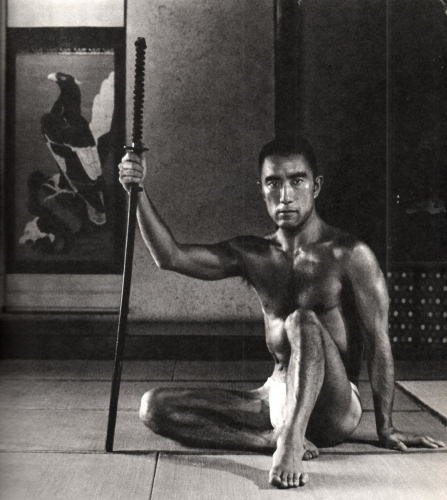

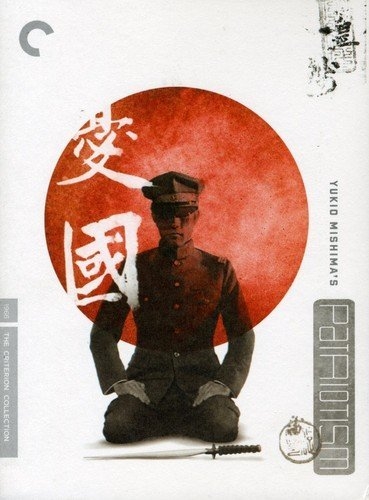









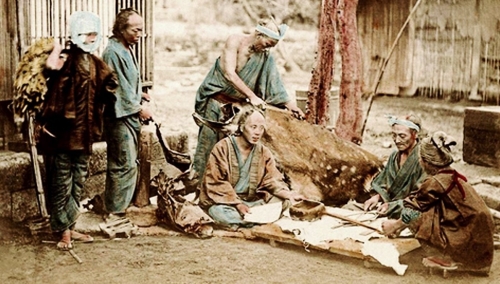


 En résumé, nous pouvons constater qu'il y a de nombreuses cartes et graphiques dans cet intéressant numéro de Limes, comme pour réitérer la primauté de la géographie sur la philosophie politique si chère à Haushofer lui-même. Ce n'est pas pour rien qu'il est à l'origine de la création de l'école géopolitique japonaise, qui a fortement orienté les choix du gouvernement pendant la période du militarisme. Certains des principes fondateurs du Nippon Chiseigaku (chi/terre [地], sei/politique [政], gaku/étude [学]) visaient à dénoncer la "brutalité des Blancs", dont Julius Evola fut le premier à parler dans son article, comme toujours prophétique: Oracca all'Asia. Il tramonto dell'Oriente (initialement publié dans Il Nazionale, II, 41, 8 octobre 1950 et maintenant inclus dans Julius Evola, Fascismo Giappone Zen. Scritti sull'Oriente 1927 - 1975, Riccardo Rosati [ed.], Rome, Pages, 2016). Pour les Japonais, leur expansion imparable en Asie était une "guerre de libération de la domination coloniale blanche" (23). Et, comme le rapporte à juste titre l'Editorial cité ici, l'apport de la pensée de Haushofer a été d'une énorme importance dans la structuration d'une haute idée de l'impérialisme japonais: "Le pan-continentalisme de l'école haushoferienne a contribué à structurer le projet de la Grande Asie orientale [...]" (26).
En résumé, nous pouvons constater qu'il y a de nombreuses cartes et graphiques dans cet intéressant numéro de Limes, comme pour réitérer la primauté de la géographie sur la philosophie politique si chère à Haushofer lui-même. Ce n'est pas pour rien qu'il est à l'origine de la création de l'école géopolitique japonaise, qui a fortement orienté les choix du gouvernement pendant la période du militarisme. Certains des principes fondateurs du Nippon Chiseigaku (chi/terre [地], sei/politique [政], gaku/étude [学]) visaient à dénoncer la "brutalité des Blancs", dont Julius Evola fut le premier à parler dans son article, comme toujours prophétique: Oracca all'Asia. Il tramonto dell'Oriente (initialement publié dans Il Nazionale, II, 41, 8 octobre 1950 et maintenant inclus dans Julius Evola, Fascismo Giappone Zen. Scritti sull'Oriente 1927 - 1975, Riccardo Rosati [ed.], Rome, Pages, 2016). Pour les Japonais, leur expansion imparable en Asie était une "guerre de libération de la domination coloniale blanche" (23). Et, comme le rapporte à juste titre l'Editorial cité ici, l'apport de la pensée de Haushofer a été d'une énorme importance dans la structuration d'une haute idée de l'impérialisme japonais: "Le pan-continentalisme de l'école haushoferienne a contribué à structurer le projet de la Grande Asie orientale [...]" (26). Aujourd'hui, c'est un devoir pour un japonologue qui n'est pas esclave du globalisme de parler d'un Japon très différent, peut-être même meilleur et plus fort que celui que nous aimions quand nous étions enfants, puisqu'il est redevenu un Pays/Peuple, ce dont nous, Italiens, ne parvenons jamais à comprendre l'importance.
Aujourd'hui, c'est un devoir pour un japonologue qui n'est pas esclave du globalisme de parler d'un Japon très différent, peut-être même meilleur et plus fort que celui que nous aimions quand nous étions enfants, puisqu'il est redevenu un Pays/Peuple, ce dont nous, Italiens, ne parvenons jamais à comprendre l'importance. 
 "Mishima, pour reprendre la précieuse définition qu'en donne Marguerite Yourcenar dans son excellent Mishima ou la Vision du vide (1980), est un "univers" dans lequel, en fait, le côté esthétique - je l'explique dans mon livre - joue un rôle prépondérant. À cet élément, le grand intellectuel et écrivain japonais a ajouté la discipline martiale/militaire, sous le signe de la redécouverte d'un héritage capital de cette culture japonaise traditionnelle à laquelle il s'est référé, dans la " deuxième partie " de sa vie, avec vigueur et rigueur ; à savoir le Bunbu Ryōdō (文武両道, la Voie de la vertu littéraire et guerrière), où la plume devient métaphoriquement une épée.
"Mishima, pour reprendre la précieuse définition qu'en donne Marguerite Yourcenar dans son excellent Mishima ou la Vision du vide (1980), est un "univers" dans lequel, en fait, le côté esthétique - je l'explique dans mon livre - joue un rôle prépondérant. À cet élément, le grand intellectuel et écrivain japonais a ajouté la discipline martiale/militaire, sous le signe de la redécouverte d'un héritage capital de cette culture japonaise traditionnelle à laquelle il s'est référé, dans la " deuxième partie " de sa vie, avec vigueur et rigueur ; à savoir le Bunbu Ryōdō (文武両道, la Voie de la vertu littéraire et guerrière), où la plume devient métaphoriquement une épée. 



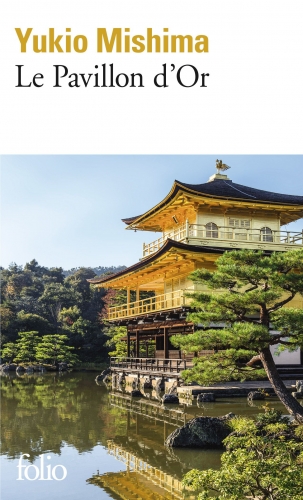
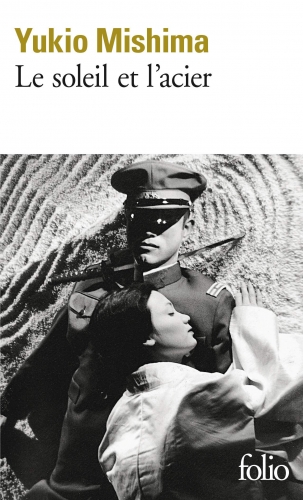
 " Disons d'abord que Mishima était un admirateur du Vate, au point de traduire en 1965 l'une de ses œuvres : Le martyre de Saint Sébastien (1911). Outre la similitude immédiate de leurs personnalités, qui partagent une exaltation bien connue de l'action virile et de l'audace, il est utile de souligner qu'il existait également une proximité artistique entre les deux. Tous deux, bien qu'appartenant à des époques et des contextes culturels différents, relèvent de ce que les critiques littéraires appellent le "décadentisme". C'est-à-dire une déclinaison du romantisme où l'esthétique se greffe sur un "personnalisme" presque exagéré et, parfois, enclin à la désillusion, où apparaissent également des relents de dandysme.
" Disons d'abord que Mishima était un admirateur du Vate, au point de traduire en 1965 l'une de ses œuvres : Le martyre de Saint Sébastien (1911). Outre la similitude immédiate de leurs personnalités, qui partagent une exaltation bien connue de l'action virile et de l'audace, il est utile de souligner qu'il existait également une proximité artistique entre les deux. Tous deux, bien qu'appartenant à des époques et des contextes culturels différents, relèvent de ce que les critiques littéraires appellent le "décadentisme". C'est-à-dire une déclinaison du romantisme où l'esthétique se greffe sur un "personnalisme" presque exagéré et, parfois, enclin à la désillusion, où apparaissent également des relents de dandysme. 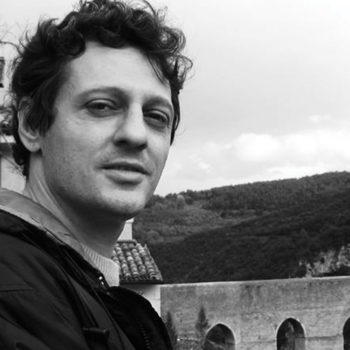

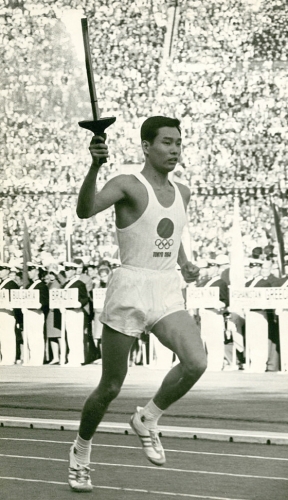



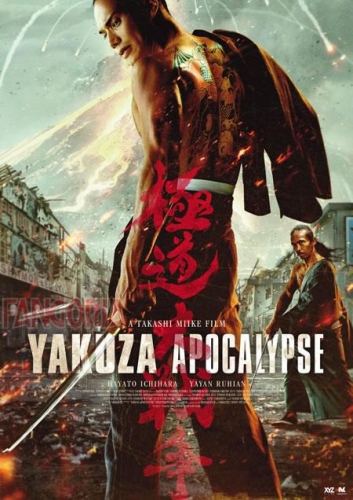

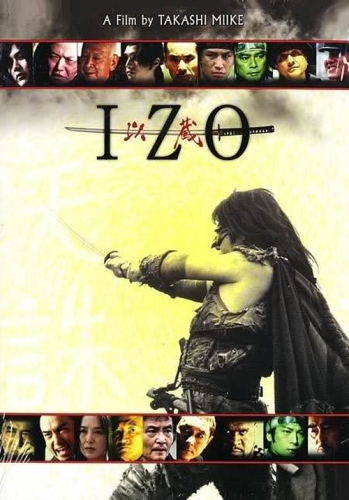










 Au Japon, les arts martiaux ont des origines très anciennes et sont profondément ancrés dans la culture traditionnelle du pays. Parmi les disciplines qui, de ce point de vue, sont les plus éloignées dans le temps, il y a certainement le tir à l'arc, qui se pratiquait à pied ou à cheval. Dans ce dernier cas, on parle de yabusame alors que dans le premier cas, on parle de kyujutsu. C’est donc l'ancêtre du Kyudo, discipline plus moderne.
Au Japon, les arts martiaux ont des origines très anciennes et sont profondément ancrés dans la culture traditionnelle du pays. Parmi les disciplines qui, de ce point de vue, sont les plus éloignées dans le temps, il y a certainement le tir à l'arc, qui se pratiquait à pied ou à cheval. Dans ce dernier cas, on parle de yabusame alors que dans le premier cas, on parle de kyujutsu. C’est donc l'ancêtre du Kyudo, discipline plus moderne.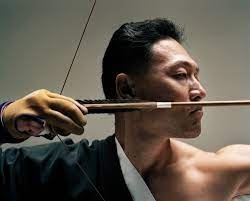 Deux mots sur les instruments et la pratique du Kyudo: tout d'abord l'arc (yumi). Il est grand (environ 2 mètres) et il est fait d'éléments en bois et en bambou, ce qui le rend élastique et résistant à la fois. Les flèches étaient et sont de formes et de matériaux différents selon leur utilisation et leur lieu de fabrication. Quant aux compétitions, on lance généralement une cible à 28 ou 60 mètres et le vainqueur est décrété non seulement en fonction du nombre de flèches qui ont atteint la cible (efficacité du tir) mais aussi en fonction de l'exécution correcte des mouvements et des positions de base. En effet, le but du Kyudo n'est pas seulement de participer à des compétitions, mais de cultiver l'esprit et le corps comme une méthode d'amélioration de soi par la recherche de la perfection du tir combinée à la pureté de l'esprit et à l'harmonie intérieure et extérieure.
Deux mots sur les instruments et la pratique du Kyudo: tout d'abord l'arc (yumi). Il est grand (environ 2 mètres) et il est fait d'éléments en bois et en bambou, ce qui le rend élastique et résistant à la fois. Les flèches étaient et sont de formes et de matériaux différents selon leur utilisation et leur lieu de fabrication. Quant aux compétitions, on lance généralement une cible à 28 ou 60 mètres et le vainqueur est décrété non seulement en fonction du nombre de flèches qui ont atteint la cible (efficacité du tir) mais aussi en fonction de l'exécution correcte des mouvements et des positions de base. En effet, le but du Kyudo n'est pas seulement de participer à des compétitions, mais de cultiver l'esprit et le corps comme une méthode d'amélioration de soi par la recherche de la perfection du tir combinée à la pureté de l'esprit et à l'harmonie intérieure et extérieure.










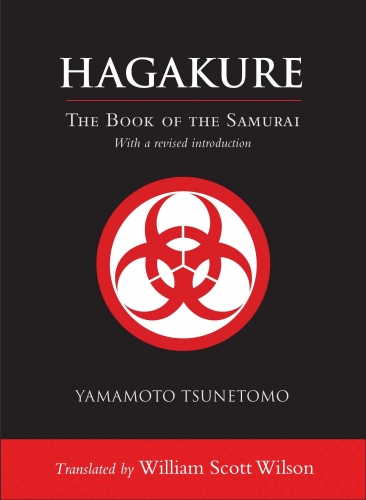
 Le maître ajoute :
Le maître ajoute :
 La maison d'édition de Parme, méritante et courageuse, All’Insegna del Veltro, dirigée par l'excellent traditionaliste Claudio Mutti, a publié, il y a déjà quelques années, plusieurs textes fondamentaux du savant et yamatologue (= japonologue) allemand Karl Haushofer (1869-1946), fondateur en 1924 de la prestigieuse Zeitschrift für Geopolitik ("Revue de géopolitique") et auteur de nombreux ouvrages liés à la géopolitique. Il était un défenseur tenace de la nécessité d’unir la masse continentale eurasienne. Dénoncé comme un idéologue du soi-disant expansionnisme d'Hitler, Haushofer était au contraire authentiquement anti-impérialiste. D'ailleurs, son plus grand connaisseur dans notre mouvance, le Belge Robert Steuckers, est profondément convaincu que la Géopolitique de Haushofer était précisément "non hégémonique", en opposition aux intrigues des puissances thalassocratiques anglo-saxonnes voulant une domination totale sur le monde, puisque ces dernières empêchaient le développement harmonieux des peuples qu'elles soumettaient et divisaient inutilement les continents.
La maison d'édition de Parme, méritante et courageuse, All’Insegna del Veltro, dirigée par l'excellent traditionaliste Claudio Mutti, a publié, il y a déjà quelques années, plusieurs textes fondamentaux du savant et yamatologue (= japonologue) allemand Karl Haushofer (1869-1946), fondateur en 1924 de la prestigieuse Zeitschrift für Geopolitik ("Revue de géopolitique") et auteur de nombreux ouvrages liés à la géopolitique. Il était un défenseur tenace de la nécessité d’unir la masse continentale eurasienne. Dénoncé comme un idéologue du soi-disant expansionnisme d'Hitler, Haushofer était au contraire authentiquement anti-impérialiste. D'ailleurs, son plus grand connaisseur dans notre mouvance, le Belge Robert Steuckers, est profondément convaincu que la Géopolitique de Haushofer était précisément "non hégémonique", en opposition aux intrigues des puissances thalassocratiques anglo-saxonnes voulant une domination totale sur le monde, puisque ces dernières empêchaient le développement harmonieux des peuples qu'elles soumettaient et divisaient inutilement les continents. Outre la géopolitique, la plus grande passion intellectuelle du professeur et général bavarois était le Japon, qu'il a analysé, à son époque, avant la première guerre mondiale, d'un point de vue absolument original. Pour démontrer l’excellence et l'utilité des écrits de Haushofer sur le Pays du Soleil Levant, il faut mentionner un fait : il a été impliqué par le grand orientaliste italien Giuseppe Tucci (1894 - 1984) (photo) dans les activités de l'IsMEO (Institut italien pour le Moyen-Orient et l'Extrême-Orient). En effet, il a été invité à Rome par cet institut pour donner deux conférences. Son texte, Le développement de l'idée impériale japonaise, n'est qu’un extrait de la deuxième conférence donnée par Haushofer, le 6 mars 1941, en pleine Seconde Guerre mondiale ! Le texte est à insérer, historiquement, comme le souligne l'éditeur du "Cahier", le regretté Carlo Terracciano, dans le contexte des activités culturelles promues par Tucci lui-même.Celui-ci visait à informer et à sensibiliser l'intelligentsia italienne sur les opportunités et les nécessités, ainsi que sur les problèmes, de l'unité géopolitique de l'Eurasie, afin d'orienter la politique nationale vers la promotion d'une vision culturelle géopolitiquement centrée sur les relations entre l'Europe et le continent asiatique.
Outre la géopolitique, la plus grande passion intellectuelle du professeur et général bavarois était le Japon, qu'il a analysé, à son époque, avant la première guerre mondiale, d'un point de vue absolument original. Pour démontrer l’excellence et l'utilité des écrits de Haushofer sur le Pays du Soleil Levant, il faut mentionner un fait : il a été impliqué par le grand orientaliste italien Giuseppe Tucci (1894 - 1984) (photo) dans les activités de l'IsMEO (Institut italien pour le Moyen-Orient et l'Extrême-Orient). En effet, il a été invité à Rome par cet institut pour donner deux conférences. Son texte, Le développement de l'idée impériale japonaise, n'est qu’un extrait de la deuxième conférence donnée par Haushofer, le 6 mars 1941, en pleine Seconde Guerre mondiale ! Le texte est à insérer, historiquement, comme le souligne l'éditeur du "Cahier", le regretté Carlo Terracciano, dans le contexte des activités culturelles promues par Tucci lui-même.Celui-ci visait à informer et à sensibiliser l'intelligentsia italienne sur les opportunités et les nécessités, ainsi que sur les problèmes, de l'unité géopolitique de l'Eurasie, afin d'orienter la politique nationale vers la promotion d'une vision culturelle géopolitiquement centrée sur les relations entre l'Europe et le continent asiatique. L'Allemand, dans le rapport qu’il a exposé à Rome, propose un parallélisme continu entre l'histoire européenne et japonaise : "[...] les luttes sauvages entre Taira et Minamoto, semblables à la guerre des Deux Roses, [...]" (18). Il souligne ainsi ce destin commun de l'histoire européenne et japonaise. (18), destin commun auquel il croyait obstinément. Tucci a été très impressionné par le caractère non fictionnel de la spéculation de Haushofer, par le fait que le géopolitologue a reconnu la primauté de Rome et de l'Italie en général, afin de construire une alliance avec le Japon qui ne soit pas seulement politique, mais spirituelle ; par exemple, lorsqu'il compare Kitabatake Chikafusa (1293-1354) à Dante (19), puisque tous deux ont été les auteurs de grands "poèmes politiques". Cela l'amène à déclarer que la Divine Comédie a trouvé une grande résonance dans le Jinnoshiki contemporain (神皇正統記, "Jinnō shōtōki", ca. 1339) de Kitabatake, qui peut raisonnablement être considéré comme un classique de la pensée politique japonaise, où les principes de légitimité de la lignée impériale ont été établis, conformément à la tradition shintoïste. Un tel texte, dans son ancrage de la "légitimité politique" à une matrice religieuse, ne pouvait qu'attirer l'intérêt des Allemands, qui en appréciaient les valeurs, ce qui aurait pu être une inspiration pour les nations occidentales non asservies à l'Economie et à la recherche de formules éthico-politiques sur lesquelles modeler une nouvelle forme de société, tournée vers le passé, certes, mais non nostalgique.
L'Allemand, dans le rapport qu’il a exposé à Rome, propose un parallélisme continu entre l'histoire européenne et japonaise : "[...] les luttes sauvages entre Taira et Minamoto, semblables à la guerre des Deux Roses, [...]" (18). Il souligne ainsi ce destin commun de l'histoire européenne et japonaise. (18), destin commun auquel il croyait obstinément. Tucci a été très impressionné par le caractère non fictionnel de la spéculation de Haushofer, par le fait que le géopolitologue a reconnu la primauté de Rome et de l'Italie en général, afin de construire une alliance avec le Japon qui ne soit pas seulement politique, mais spirituelle ; par exemple, lorsqu'il compare Kitabatake Chikafusa (1293-1354) à Dante (19), puisque tous deux ont été les auteurs de grands "poèmes politiques". Cela l'amène à déclarer que la Divine Comédie a trouvé une grande résonance dans le Jinnoshiki contemporain (神皇正統記, "Jinnō shōtōki", ca. 1339) de Kitabatake, qui peut raisonnablement être considéré comme un classique de la pensée politique japonaise, où les principes de légitimité de la lignée impériale ont été établis, conformément à la tradition shintoïste. Un tel texte, dans son ancrage de la "légitimité politique" à une matrice religieuse, ne pouvait qu'attirer l'intérêt des Allemands, qui en appréciaient les valeurs, ce qui aurait pu être une inspiration pour les nations occidentales non asservies à l'Economie et à la recherche de formules éthico-politiques sur lesquelles modeler une nouvelle forme de société, tournée vers le passé, certes, mais non nostalgique. Une synthèse inestimable sur la ‘’japonicitié’’
Une synthèse inestimable sur la ‘’japonicitié’’ Il convient maintenant de proposer une petite clarification linguistique. En transcrivant le terme chinois susmentionné, Haushofer utilise étrangement, pour un Allemand, le système de transcription de l'EFEO (École française d'Extrême-Orient), au lieu du Wade-Giles alors plus populaire. Dans ce système de romanisation phonétique, "Ko" correspond au "Ge" de l'actuel pinyin, le mot devient donc "gémìng" (革命, "revolt/revolt"), terme également utilisé pour désigner la grande révolution culturelle maoïste (文化大革命, "Wénhuà dà gémìng"). Cela nous fait comprendre comment certains concepts enracinés en Chine depuis l'Antiquité ont survécu aux bouleversements politiques les plus dramatiques. Dans l'Empire du Milieu, en effet, lorsqu'une famine ou toute autre catastrophe naturelle se produisait, l'Empereur lui-même était responsable, puisqu'il avait perdu la bienveillance des Déités, et le Peuple se sentait autorisé à se rebeller contre lui et à le déposer de force. Cela explique l'alternance de tant de dynasties dans le pays. Tout le contraire, comme on l'a dit, pour le Japon traditionnel, où l'empereur est un Dieu intouchable.
Il convient maintenant de proposer une petite clarification linguistique. En transcrivant le terme chinois susmentionné, Haushofer utilise étrangement, pour un Allemand, le système de transcription de l'EFEO (École française d'Extrême-Orient), au lieu du Wade-Giles alors plus populaire. Dans ce système de romanisation phonétique, "Ko" correspond au "Ge" de l'actuel pinyin, le mot devient donc "gémìng" (革命, "revolt/revolt"), terme également utilisé pour désigner la grande révolution culturelle maoïste (文化大革命, "Wénhuà dà gémìng"). Cela nous fait comprendre comment certains concepts enracinés en Chine depuis l'Antiquité ont survécu aux bouleversements politiques les plus dramatiques. Dans l'Empire du Milieu, en effet, lorsqu'une famine ou toute autre catastrophe naturelle se produisait, l'Empereur lui-même était responsable, puisqu'il avait perdu la bienveillance des Déités, et le Peuple se sentait autorisé à se rebeller contre lui et à le déposer de force. Cela explique l'alternance de tant de dynasties dans le pays. Tout le contraire, comme on l'a dit, pour le Japon traditionnel, où l'empereur est un Dieu intouchable.
 Quoi qu'il en soit, il faut préciser que le penseur allemand n'a pas simplement posé les prémisses d'une géopolitique qui n'était pas eurocentrique, c'est-à-dire encline à protéger les intérêts des puissances occidentales oppressives habituelles. Haushofer est allé beaucoup plus loin, à l'autre bout du globe, jusqu'au lointain Japon, en essayant de saisir des éléments structurels de valeur universelle. Comprenant que, pour déchiffrer ce Peuple, il est nécessaire de ne jamais séparer le politique du sacré, il nous apparaît comme le meilleur yamatologue (japonologue) du 20ème siècle, avec notre Père Mario Marega - missionnaire salésien très cultivé, auteur d'une indispensable traduction de Kojiki, publiée par Laterza en 1938 - et Fosco Maraini. Il faut également rappeler le principe très clair de Haushofer selon lequel le gouvernement du territoire doit être garanti par une appartenance éthico-politique dont le souverain est le symbole vivant, représentant la "dimension interne" : le kokoro (心) (21), son "cœur". Et cette frontière spirituelle - pas seulement dans le cas du Japon - doit être défendue à tout prix. Ce n'est pas pour rien qu'il utilise à plusieurs reprises le terme "marca", qui à l'époque des Carolingiens indiquait un territoire frontalier.
Quoi qu'il en soit, il faut préciser que le penseur allemand n'a pas simplement posé les prémisses d'une géopolitique qui n'était pas eurocentrique, c'est-à-dire encline à protéger les intérêts des puissances occidentales oppressives habituelles. Haushofer est allé beaucoup plus loin, à l'autre bout du globe, jusqu'au lointain Japon, en essayant de saisir des éléments structurels de valeur universelle. Comprenant que, pour déchiffrer ce Peuple, il est nécessaire de ne jamais séparer le politique du sacré, il nous apparaît comme le meilleur yamatologue (japonologue) du 20ème siècle, avec notre Père Mario Marega - missionnaire salésien très cultivé, auteur d'une indispensable traduction de Kojiki, publiée par Laterza en 1938 - et Fosco Maraini. Il faut également rappeler le principe très clair de Haushofer selon lequel le gouvernement du territoire doit être garanti par une appartenance éthico-politique dont le souverain est le symbole vivant, représentant la "dimension interne" : le kokoro (心) (21), son "cœur". Et cette frontière spirituelle - pas seulement dans le cas du Japon - doit être défendue à tout prix. Ce n'est pas pour rien qu'il utilise à plusieurs reprises le terme "marca", qui à l'époque des Carolingiens indiquait un territoire frontalier.

 Le concept nodal de Lebensraum ("Espace de vie"), linteau de toute la géopolitique haushoférienne, ne pouvait pas manquer dans ce document. Cependant, dans l'exemple singulier du Japon, il est représenté par la mer, qui permet l'isolement, par lequel s'est développé le facteur ethnique du Japon spécifique : "Le simple fait que, contrairement à ce qui s'est passé pour toutes les autres émergences nationales, les migrations des peuples n'ont pas exercé d'influence sur l’émergence nationale japonaise : celle-ci est née indépendamment des migrations des tribus et suffirait à caractériser de façon absolue la genèse de l'État japonais" (14). Nous comprenons donc que l'expansionnisme voulu par le gouvernement militaire, et qui a conduit le pays à la guerre contre la Grande-Bretagne et les États-Unis, était à sa manière une trahison de cette doctrine que le scientifique allemand avait donnée aux nombreux officiers japonais qui furent ses étudiants : jeter une influence sur l'Asie pourrait également être une solution équitable pour le Japon, à condition toutefois de ne pas affaiblir ce chapelet d'identité et d'autodéfense qui, des siècles auparavant, à deux reprises, avec la force du vent et de l'eau, avait sauvé l'archipel de l'invasion mongole. Dit d'une manière plus "technico-militaire", l'armée japonaise était dispersée dans tout l'Extrême-Orient, laissant, après le désastre de Midway (3-6 juin 1942), le Peuple chez lui, pratiquement sans défense.
Le concept nodal de Lebensraum ("Espace de vie"), linteau de toute la géopolitique haushoférienne, ne pouvait pas manquer dans ce document. Cependant, dans l'exemple singulier du Japon, il est représenté par la mer, qui permet l'isolement, par lequel s'est développé le facteur ethnique du Japon spécifique : "Le simple fait que, contrairement à ce qui s'est passé pour toutes les autres émergences nationales, les migrations des peuples n'ont pas exercé d'influence sur l’émergence nationale japonaise : celle-ci est née indépendamment des migrations des tribus et suffirait à caractériser de façon absolue la genèse de l'État japonais" (14). Nous comprenons donc que l'expansionnisme voulu par le gouvernement militaire, et qui a conduit le pays à la guerre contre la Grande-Bretagne et les États-Unis, était à sa manière une trahison de cette doctrine que le scientifique allemand avait donnée aux nombreux officiers japonais qui furent ses étudiants : jeter une influence sur l'Asie pourrait également être une solution équitable pour le Japon, à condition toutefois de ne pas affaiblir ce chapelet d'identité et d'autodéfense qui, des siècles auparavant, à deux reprises, avec la force du vent et de l'eau, avait sauvé l'archipel de l'invasion mongole. Dit d'une manière plus "technico-militaire", l'armée japonaise était dispersée dans tout l'Extrême-Orient, laissant, après le désastre de Midway (3-6 juin 1942), le Peuple chez lui, pratiquement sans défense.

 Mishima, dans la lignée de la tradition japonaise, a conçu l'existence comme un équilibre entre des hypothèses opposées, la liberté et la répression, la vie et la mort. La vie est mieux contemplée dans l'ombre de la mort ; sous la teinte mortelle, le vital est lumineux, rayonnant. Embrasser l'existence implique d'embrasser à la fois la vie et la mort, et de cette fusion découlera la vitalité. La vie doit nécessairement être équilibrée avec la mort, sinon la vie sera informe, grotesque, désordonnée.
Mishima, dans la lignée de la tradition japonaise, a conçu l'existence comme un équilibre entre des hypothèses opposées, la liberté et la répression, la vie et la mort. La vie est mieux contemplée dans l'ombre de la mort ; sous la teinte mortelle, le vital est lumineux, rayonnant. Embrasser l'existence implique d'embrasser à la fois la vie et la mort, et de cette fusion découlera la vitalité. La vie doit nécessairement être équilibrée avec la mort, sinon la vie sera informe, grotesque, désordonnée.








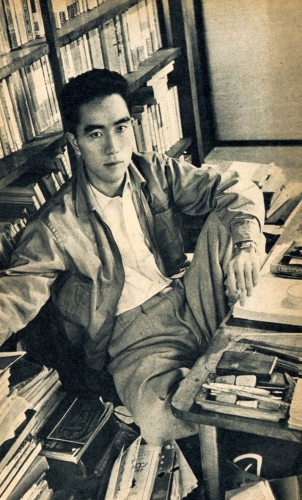


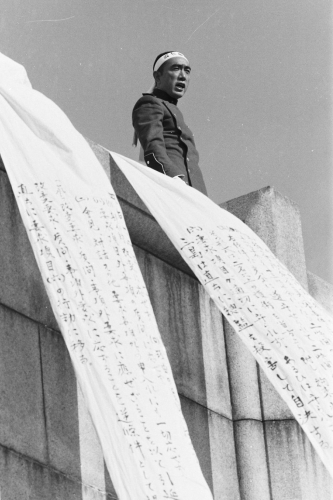

 Assumant une « étiquette » de « réactionnaire », Yukio Mishima fonde en 1968 la Société du Bouclier. Dès février 1969, la nouvelle structure qui s’entraîne avec les unités militaires japonaises, dispose d’un « manifeste contre-révolutionnaire », le Hankakumei Sengen. Sa raison d’être ? Protéger l’Empereur (le tenno), le Japon et la culture d’un péril subversif communiste immédiat. Par-delà la disparition de l’article 9, il conteste le renoncement à l’été 1945 par le tenno lui-même de son caractère divin. Il critique la constitution libérale parlementaire d’émanation étatsunienne. Il n’accepte pas que la nation japonaise devienne un pays de second rang. Yukio Mishima s’inscrit ainsi dans des précédents héroïques comme le soulèvement de la Porte Sakurada en 1860 quand des samouraï scandalisés par les accords signés avec les « Barbares » étrangers éliminent un haut-dignitaire du gouvernement shogunal, la révolte de la Ligue du Vent Divin (Shimpûren) de 1876 ou, plus récemment, le putsch du 26 février 1936. Ce jour-là, la faction de la voie impériale (Kodoha), un courant politico-mystique au sein de l’armée impériale influencé par les écrits d’Ikki Kita (1883 – 1937), assassine les ministres des Finances et de la Justice ainsi que l’inspecteur général de l’Éducation militaire. Si la garnison de Tokyo et une partie de l’état-major se sentent proches des thèses développées par le Kodoha, la marine impériale, plus proche des rivaux de la Faction de contrôle (ou Toseiha), fait pression sur la rébellion. Les troupes loyalistes rétablissent finalement la légalité. Yukio Mishima tire de ces journées tragiques son récit Patriotisme.
Assumant une « étiquette » de « réactionnaire », Yukio Mishima fonde en 1968 la Société du Bouclier. Dès février 1969, la nouvelle structure qui s’entraîne avec les unités militaires japonaises, dispose d’un « manifeste contre-révolutionnaire », le Hankakumei Sengen. Sa raison d’être ? Protéger l’Empereur (le tenno), le Japon et la culture d’un péril subversif communiste immédiat. Par-delà la disparition de l’article 9, il conteste le renoncement à l’été 1945 par le tenno lui-même de son caractère divin. Il critique la constitution libérale parlementaire d’émanation étatsunienne. Il n’accepte pas que la nation japonaise devienne un pays de second rang. Yukio Mishima s’inscrit ainsi dans des précédents héroïques comme le soulèvement de la Porte Sakurada en 1860 quand des samouraï scandalisés par les accords signés avec les « Barbares » étrangers éliminent un haut-dignitaire du gouvernement shogunal, la révolte de la Ligue du Vent Divin (Shimpûren) de 1876 ou, plus récemment, le putsch du 26 février 1936. Ce jour-là, la faction de la voie impériale (Kodoha), un courant politico-mystique au sein de l’armée impériale influencé par les écrits d’Ikki Kita (1883 – 1937), assassine les ministres des Finances et de la Justice ainsi que l’inspecteur général de l’Éducation militaire. Si la garnison de Tokyo et une partie de l’état-major se sentent proches des thèses développées par le Kodoha, la marine impériale, plus proche des rivaux de la Faction de contrôle (ou Toseiha), fait pression sur la rébellion. Les troupes loyalistes rétablissent finalement la légalité. Yukio Mishima tire de ces journées tragiques son récit Patriotisme. 









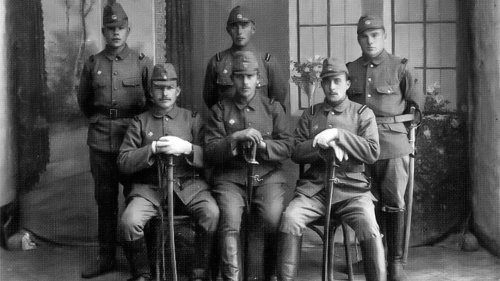







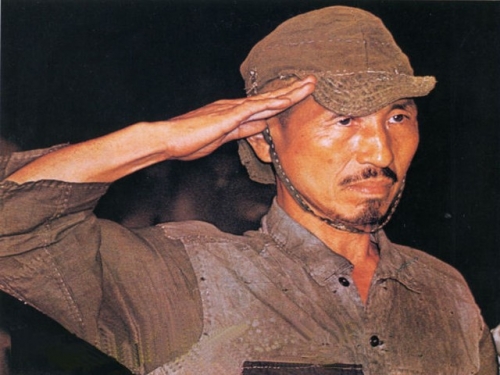
 Jeune lieutenant à la fin du conflit, Hirô Onoda rejoint l’île occidentale de Lubang aux Philippines. Instruit auparavant dans une école de guérilla à Futamata, il reçoit des ordres explicites : 1) ne jamais se donner la mort, 2) désorganiser au mieux l’arrière des lignes ennemies une fois que l’armée impériale se sera retirée, 3) tout observer dans l’attente d’un prochain débarquement japonais.
Jeune lieutenant à la fin du conflit, Hirô Onoda rejoint l’île occidentale de Lubang aux Philippines. Instruit auparavant dans une école de guérilla à Futamata, il reçoit des ordres explicites : 1) ne jamais se donner la mort, 2) désorganiser au mieux l’arrière des lignes ennemies une fois que l’armée impériale se sera retirée, 3) tout observer dans l’attente d’un prochain débarquement japonais. Modèle d’abnégation patriotique totale, bel exemple d’impersonnalité active, Hirô Onoda est alors certain qu’en cas d’invasion du Japon, « les femmes et les enfants se battraient avec des bâtons en bambou, tuant un maximum de soldats avant de mourir. En temps de guerre, les journaux martelaient cette résolution avec les mots les plus forts possibles : “ Combattez jusqu’au dernier souffle ! ”, “ Il faut protéger l’Empire à tout prix ! ”, “ Cent millions de morts pour le Japon ! ” (pp. 177 – 178) ». Ce n’est que le 9 mars 1974 que le lieutenant Onoda arrête sa guerre dans des circonstances qu’il reviendra au lecteur de découvrir.
Modèle d’abnégation patriotique totale, bel exemple d’impersonnalité active, Hirô Onoda est alors certain qu’en cas d’invasion du Japon, « les femmes et les enfants se battraient avec des bâtons en bambou, tuant un maximum de soldats avant de mourir. En temps de guerre, les journaux martelaient cette résolution avec les mots les plus forts possibles : “ Combattez jusqu’au dernier souffle ! ”, “ Il faut protéger l’Empire à tout prix ! ”, “ Cent millions de morts pour le Japon ! ” (pp. 177 – 178) ». Ce n’est que le 9 mars 1974 que le lieutenant Onoda arrête sa guerre dans des circonstances qu’il reviendra au lecteur de découvrir.
 Dr. Joyce maintained that “Mishima, of course, never explored the Emperor’s role in World War II in any depth, and his chief fixation appears solely to have been the decision of the Emperor to accede to Allied demands and ‘become human.’” This is a baffling statement which again simply betrays Dr. Joyce’s lack of knowledge. Besides rightfully decrying the Showa Emperor’s self-demotion to “become human” from his traditional status of “Arahitogami” (god in human form or demigod), Mishima also critically examined the Emperor’s role in politics before, during, and after the war, which revealed that what Mishima essentially venerated was not the individual Tennō but the Kōtō (the unique and time-honored Japanese monarchical system).
Dr. Joyce maintained that “Mishima, of course, never explored the Emperor’s role in World War II in any depth, and his chief fixation appears solely to have been the decision of the Emperor to accede to Allied demands and ‘become human.’” This is a baffling statement which again simply betrays Dr. Joyce’s lack of knowledge. Besides rightfully decrying the Showa Emperor’s self-demotion to “become human” from his traditional status of “Arahitogami” (god in human form or demigod), Mishima also critically examined the Emperor’s role in politics before, during, and after the war, which revealed that what Mishima essentially venerated was not the individual Tennō but the Kōtō (the unique and time-honored Japanese monarchical system).


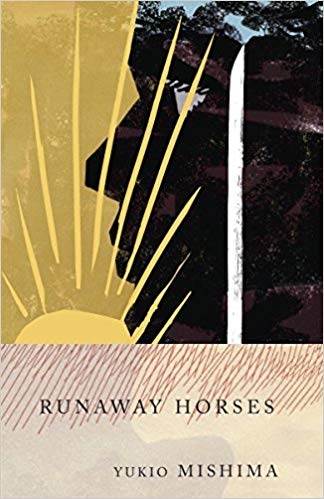 All this having been said, I still encourage people to watch Paul Schrader’s film on Mishima and to read Mishima’s guide to Hagakure (or better yet, Hagakure itself). I will myself, when time permits, try to read Mishima’s later more political fiction (e.g. Runaway Horses) and other nonfiction. A work of art is no less compelling, a logical argument no less persuasive, whatever the author’s personal deficiencies or proclivities.
All this having been said, I still encourage people to watch Paul Schrader’s film on Mishima and to read Mishima’s guide to Hagakure (or better yet, Hagakure itself). I will myself, when time permits, try to read Mishima’s later more political fiction (e.g. Runaway Horses) and other nonfiction. A work of art is no less compelling, a logical argument no less persuasive, whatever the author’s personal deficiencies or proclivities.